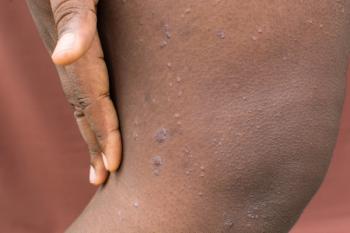
Review Examines Pros and Cons in AI Detection of Skin Cancer
Utilizing artificial intelligence (AI) to diagnose skin cancer raises concerns around the level of accuracy it delivers consumers, health care professionals, and other dermatology experts.
Skin cancer diagnosis relies on the subjective visual interpretation of clinical and dermoscopic images, making diagnostic imaging a suggested area for AI research. Convolutional neutral networks (CNN) are types of neural networks designed to analyze images and receive training through supervised learning techniques.
To classify images in dermatology, CNNs are tasked with efficacy display. Training datasets are labeled with a diagnosis, allowing the system to learn the relationship between input data and the corresponding diagnosis. When AI is trained based on datasets, it could determine skin lesions at an expertise level.
The review examined the role AI plays among consumers, considering an abundant of real-world data the authors chose. Of the reviewed data, an alarming rate of false positives were presented. The app, SkinVision, classified 980 (81%) lesions as benign and 224 (19%) presented warnings of carrying an increased risk of melanoma. When dermatologists reviewed the data, they diagnosed 9 (0.7%) abnormal lesions and 1195 (99.3%) lesions as benign, concluding a 27% higher chance of SkinVision to declare lesions suspicious. The main use of these apps targeted towards consumers is the ability to scan lesions and categorize them as high or low risk, as well as provide images promptly to qualified experts when consulting medical attention. However, the reviewal of various studies proves AI apps are not accurate enough to determine risk level, potentially leading to neglect in seeking medical attention, emotional distress, and false reassurance.
General practitioners have been recommended to implement AI in primary care to treat patients promptly and alleviate anxiety. The systematic review of AI technology recorded diagnostic accuracy as inadequate due to the lack of training in the machine data. The research reviewed determined general practitioners should not solely rely on AI because study data contrasted vastly.
Dermatologists have had exposure to market-approved AI software like the MoleAnalyzer Pro (FotoFinder ATMB) and DEXI (Vectra WB360) when diagnosing skin cancer. The review highlights AI performing better than expert dermatologists in artificial settings, whereas dermatologists were superior in real-world–based settings. Improvements in sensitivity and specificity were visible when dermatologists considered AI-supported results during decision making. Typically, dermatologists consider human preferences when drawing conclusions, which often differ depending on the patient. If dermatologists applied human preferences to AI-powered decision support, there leaves room for advancements.
Non-invasive diagnostic techniques known as reflectance confocal microscopy (RCM) and optical coherence tomography (OCT) are utilizing AI in practice. The criteria for skin conditions are not clearly defined in RCM images whereas OCT produces high-resolution and cross-sectional images of the skin of no more than 2 mm in depth. Combining both RCM (cellular resolution) and OCT (penetration depth) has created line-field confocal OCT, providing 3 in vivo image modalities; vertical, horizontal, and a 3D reconstruction. The authors gathered that the AI detection of skin lesions lacked transparency, publicly large datasets, and the reproduction of hand-crafted features.
AI limitations present challenges to consider when collecting data and making determinations. AI performance is easily altered when input images slightly change magnification, brightness, or the presence of markings or scale bars. Despite valuable clinical metadata like patient history, age, and risk factors, image data is heavily relied on. Training data lacks diversity as well, leading to inherent biases of AI application on individuals with darker skin tones. Underrepresentation in data essentially affects AI outcomes but has potential to change when adding research input.
AI should be used on a context basis when diagnosing skin cancer. General practitioners and dermatologists should ultimately refer to human decision-making processes after considering contextual information. The review concludes, “Furthermore, the logistical challenge of seamlessly integrating AI into existing clinical workflows remains inadequately addressed”.
Reference
Brancaccio G, Balato A, Malvehy J, Puig S, Argenziano G, Kittler H. Artificial intelligence in skin cancer diagnosis: A reality check. J Invest Dermatol. Published online November 18, 2023. doi:10.1016/j.jid.2023.10.004
Newsletter
Stay ahead of policy, cost, and value—subscribe to AJMC for expert insights at the intersection of clinical care and health economics.







































